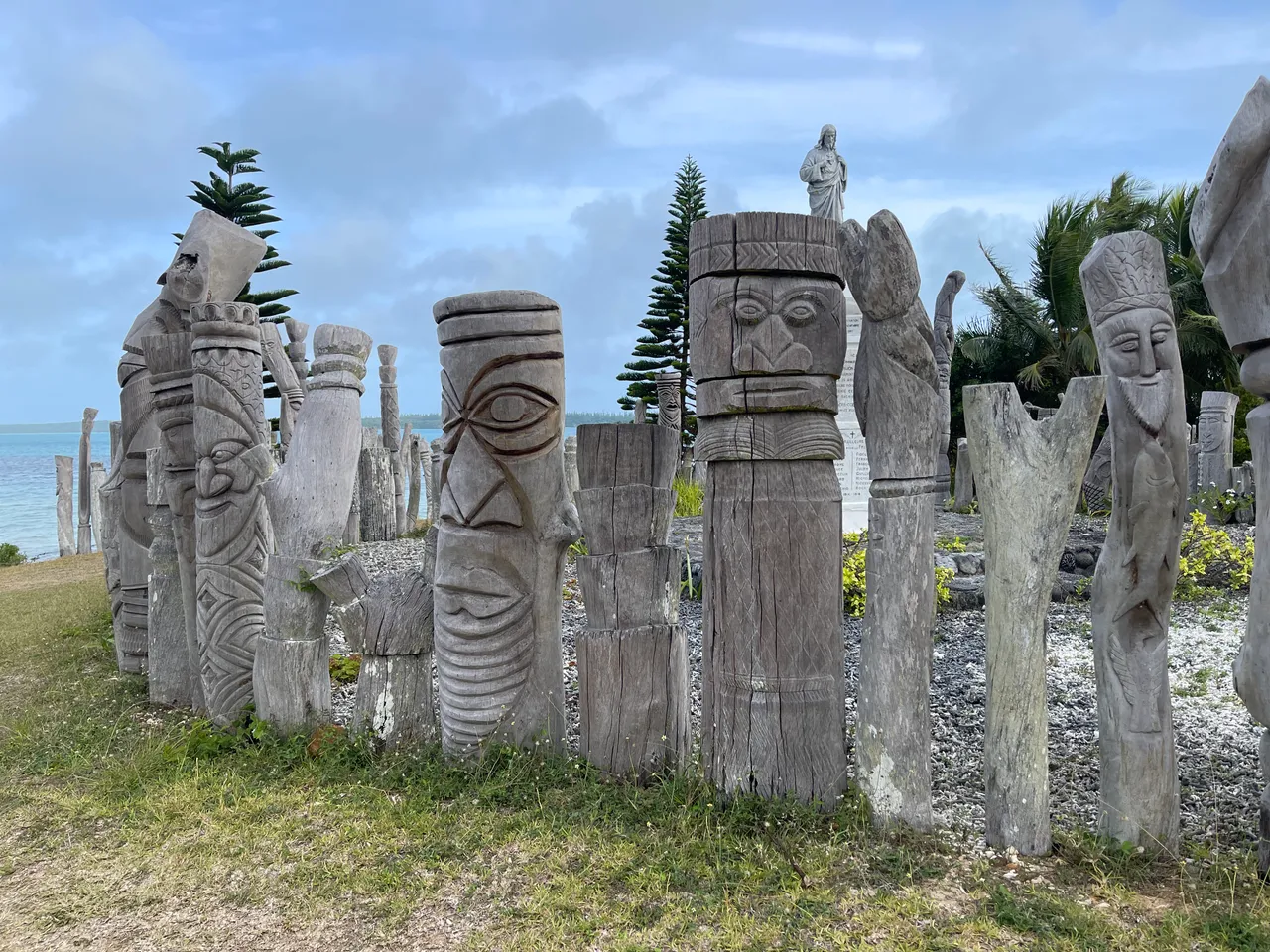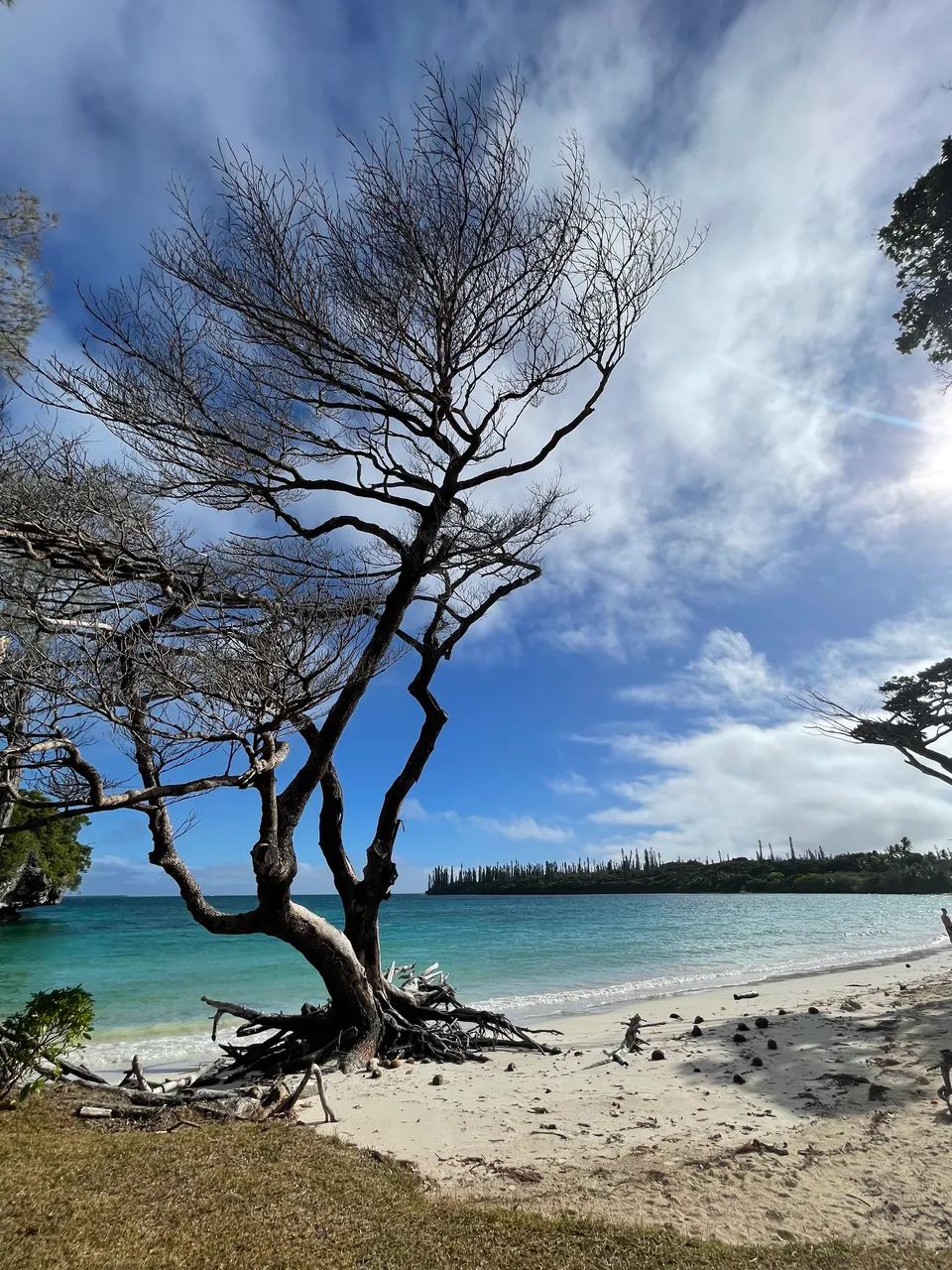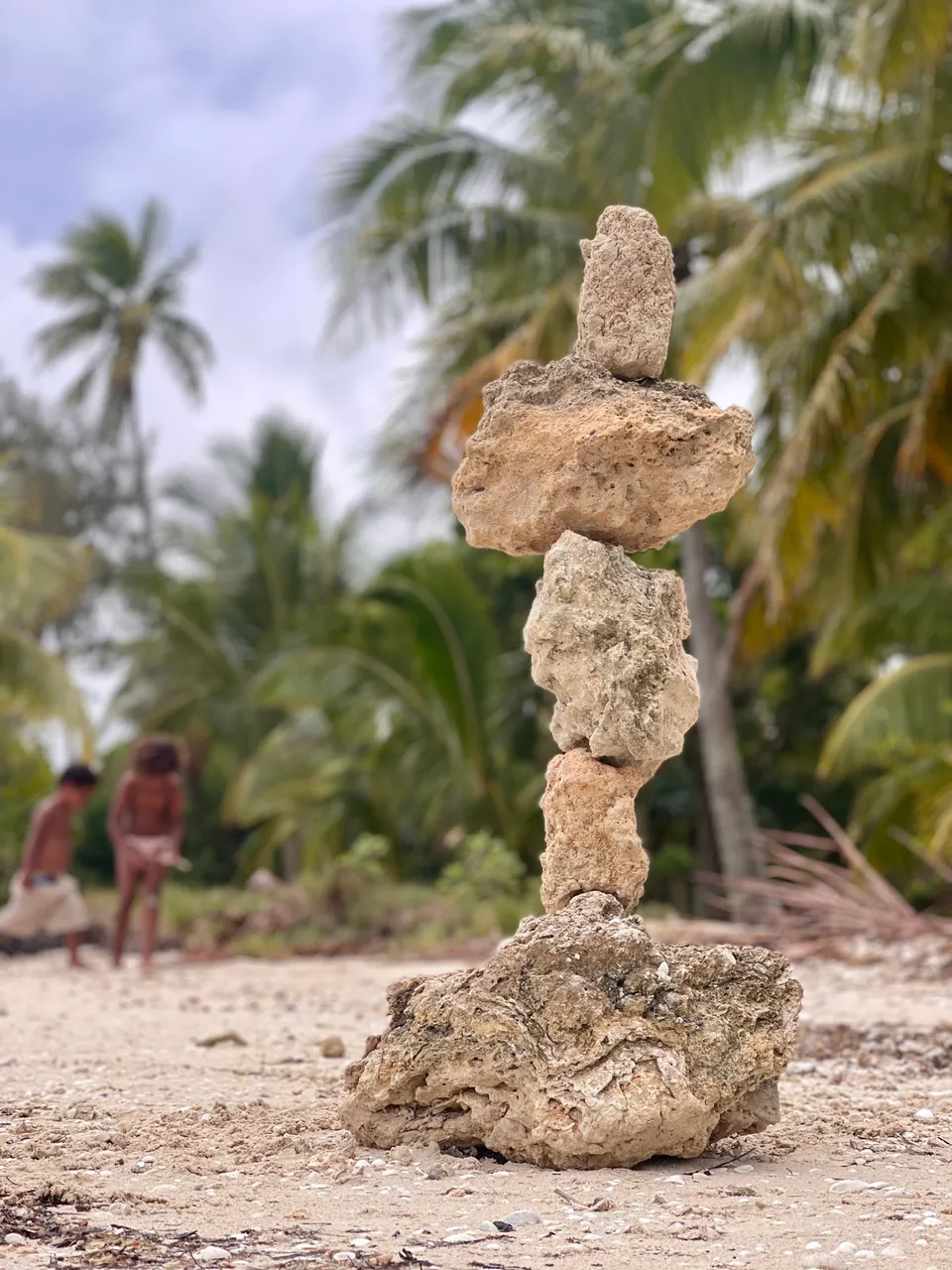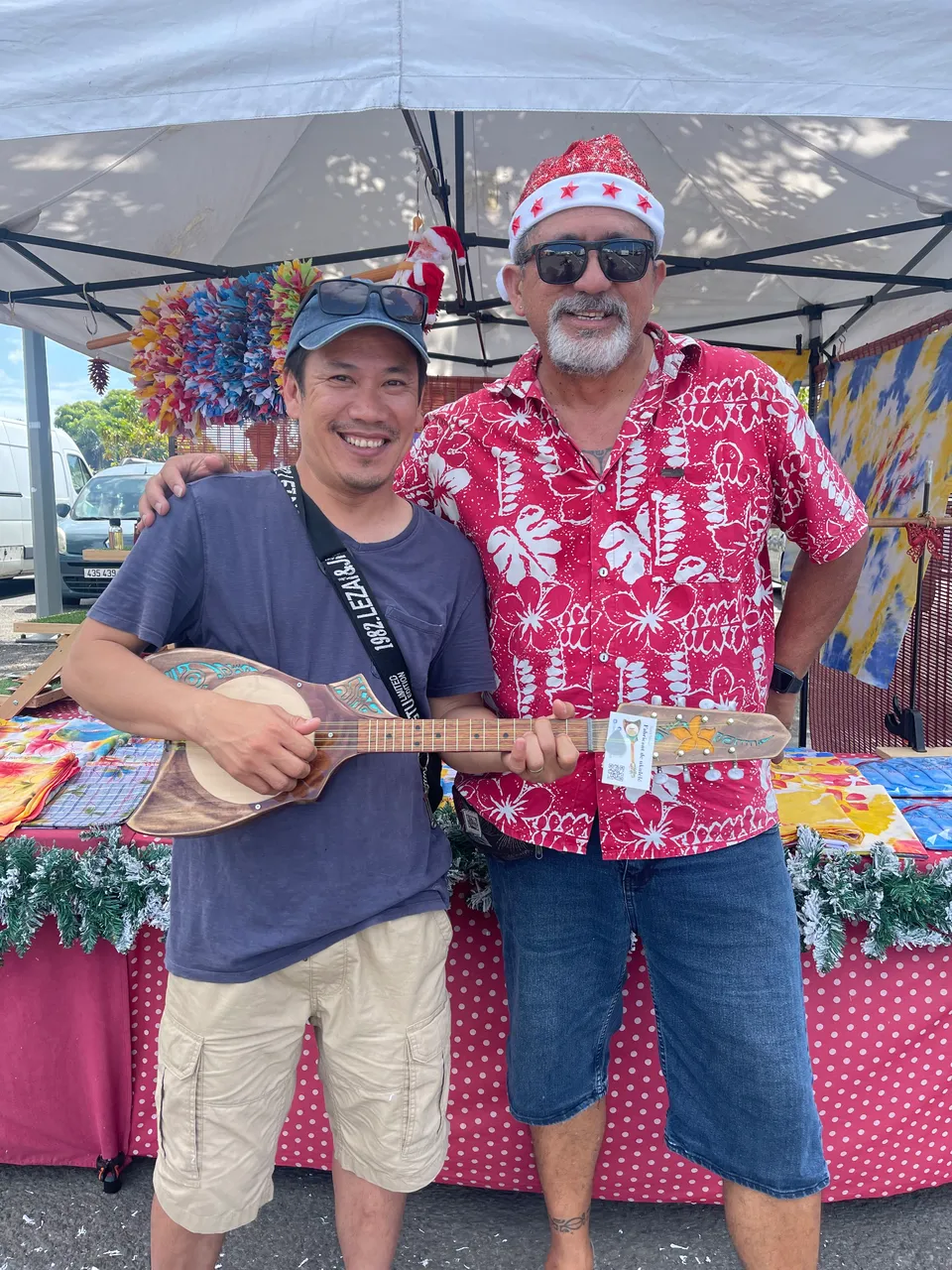
Visiting my family in New Caledonia
Back in December, I did a trip to New Caledonia to visit my parents and other relatives.
This year, one of my highschool friend was also coming back there from France, accompanied by his family and 14 other friends.
We booked a trip to the Isle of Pines (L'Île-des-Pins) with bungalos for three nights for a total of about 25 people. It was an awesome trip and we were lucky the weather was quite decent for most of the trip with a bit of rain to cool down the weather. Really can't complain.

The landscape was magnificent, the water is crystal clear, the sand was bright and fine as flour. It's just amazing.


As usual, if there are rocks nearby I would do a bit of rock balancing. Always fun and good photo opportunity.
Back on the main island, I decided this year was about time I buy this Tahitian Ukulele I've been eyeing every time I was travelling back home. Here is Edouard from Moana Ukulele on the city market in Nouméa. His little ukuleles are looking and sounding great, a little more modern looking with nice carvings.


I've been playing the Hawaiian ukulele for some time now, so transitioning to the Tahitian one shouldn't pose too much difficulty since they share the same tuning (GCEA). However, there are notable distinctions on the Tahitian ukulele:
- It features four pairs of strings crafted from thin fishing lines, resulting in a brighter tone.
- The pair of E strings is pitched one octave higher.
- Unlike the Hawaiian ukulele, the sound hole is positioned at the back.
- Additionally, there is a thin wooden resonating plate on the front, lending it a slightly banjo-like timbre.
Despite the similarities to the Hawaiian ukulele, mastering the Tahitian ukulele can be quite challenging, particularly given the fast pace at which many Tahitian songs are played.
So to begin with, I practiced playing songs I usually play on the Hawaiian ukulele:
Then I started learning Pahoho which is quite fast. At first I skipped the intro and practiced the melody section:
https://www.youtube.com/shorts/PmKlj8LHZP8
Then after a good month, I managed to play it entirely. The song "Pahoho" by Te Ava Piti tells of a passionate romance amidst Tahiti's beauty. Using metaphors like "waves crashing, two tides meeting," it portrays the lovers' union. References to Tahitian flowers symbolize love. The singer expresses unwavering devotion and compares the island's beauty to their beloved. The verse "My love is flying in the wind" denotes enduring affection, and the recurring line "the waves are breaking at the foot of the cliff" represents the relationship's ups and downs. Overall, "Pahoho" is a heartfelt tribute to love and Tahiti's allure.

